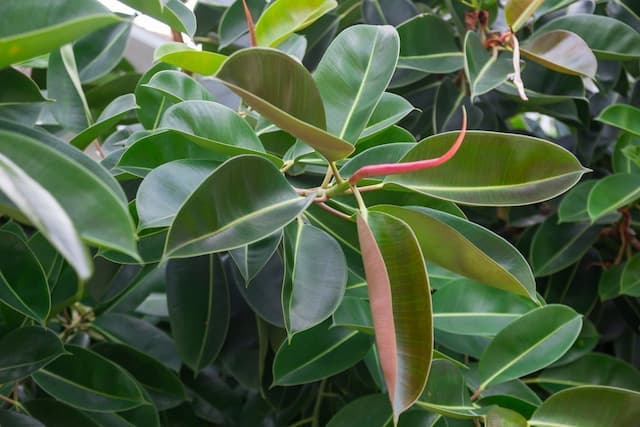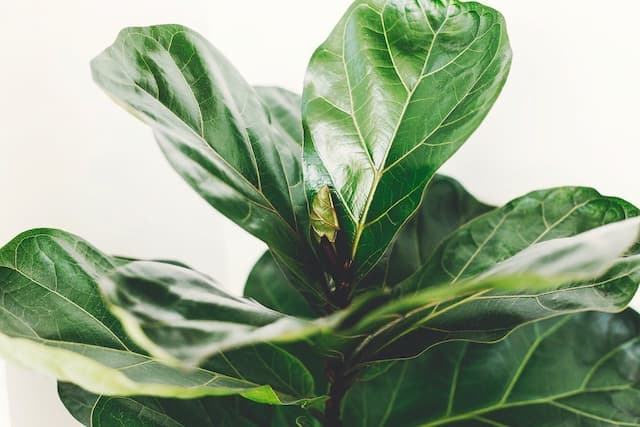Fig 'Brunswick' Ficus carica 'Brunswick' (F)

ABOUT
'Brunswick' is a large, deciduous shrub with bold, very deeply-lobed leaves and insignificant flowers followed by large, purple-flushed, green, pear-shaped fruit. Usually one crop of fruit per year, but sometimes two in a hot summer or under protection. Hardy and reliable
About this plant
 Names
NamesFamily
Moraceae
Synonyms
Brunswick Fig, Common Fig
Common names
Ficus carica 'Brunswick'
 Characteristics
CharacteristicsLife cycle
Perennials
Foliage type
Deciduous
Color of leaves
Green
Height
10-30 feet (3-9 meters)
Spread
10-30 feet (3-9 meters)
Plant type
Tree
Hardiness zones
6
Native area
Western Asia
Benefits
 General Benefits
General Benefits- Edible Fruit: The 'Brunswick' fig provides delicious sweet fruits that can be eaten fresh or dried for later consumption.
- Landscape Aesthetics: With its large, lobed leaves and spreading habit, it serves as an attractive ornamental plant for gardens and landscapes.
- Shade Provider: Its broad canopy offers a cooling shade, making it a useful tree for creating comfortable outdoor spaces.
- Wildlife Attraction: The fruit attracts birds and beneficial insects, supporting local biodiversity.
- Low Maintenance: Figs are known for being low-maintenance once established, requiring minimal care and pruning.
- Drought Tolerance: Once established, fig trees are relatively drought-resistant, making them suitable for xeriscaping or areas with water restrictions.
 Medical Properties
Medical Properties- Antioxidant: Fig fruit and leaves contain compounds that exhibit antioxidant properties.
- Antidiabetic: Consuming figs may help in lowering blood sugar levels.
- Digestive Health: Figs are a good source of dietary fiber, which can promote healthy bowel function.
- Antimicrobial: Fig extracts may demonstrate antibacterial and antifungal activities.
- Anti-inflammatory: Compounds in figs have shown anti-inflammatory effects in research studies.
- Laxative: Figs have traditionally been used to alleviate constipation due to their high fiber content.
- Respiratory Health: Some preparations of figs are used to relieve symptoms of respiratory conditions such as sore throat and coughs.
 Air-purifying Qualities
Air-purifying QualitiesThis plant is not specifically known for air purifying qualities.
 Other Uses
Other Uses- The leaves of the common fig can be used as a natural dye, imparting a soft yellow or tan color to fabrics when boiled and used in a dye bath.
- Young fig leaves can be used as a substitute for bay leaves, as they have a similar, although slightly sweeter, fragrance and can be used in slow-cooked dishes.
- In some cultures, fig leaves are used for their anti-inflammatory properties to soothe skin irritation when applied topically in a poultice form.
- Fig branches and leaves may be used in floral arrangements, providing a lush, green backdrop and adding a Mediterranean touch to bouquets.
- The latex from the fig plant can be used in traditional crafts for coagulating natural rubber and as a natural adhesive in some applications.
- The wood of the fig tree is often used in woodworking for producing small decorative items due to its workability and subtle grain patterns.
- Due to its dense foliage, the common fig can be trained and used in creating privacy screens or green walls in gardens and terraces.
- Fresh or dried fig leaves can be infused in hot water to create a fragrant herbal tea, although the flavor is very mild and slightly grassy.
- The fruit of the common fig can be used in the production of alcohol, where it is fermented to create a unique, richly-flavored fig brandy or liqueur.
- Common fig sap is sometimes used as a rennet substitute in cheese-making processes, especially in making traditional Mediterranean cheeses.
Interesting Facts
 Feng Shui
Feng ShuiThe Common Fig is not used in Feng Shui practice.
 Zodiac Sign Compitability
Zodiac Sign CompitabilityThe Common Fig is not used in astrology practice.
 Plant Symbolism
Plant Symbolism- Abundance: Commonly known as the common fig, Ficus carica is often associated with abundance and fertility due to its numerous fruit and prolific nature.
- Peace: The fig tree represents peace and tranquility, a symbolism that can be traced back to biblical times where it was mentioned as a sign of prosperity and harmony.
- Knowledge: In some traditions, the fig is seen as a fruit of knowledge and learning, perhaps most famously represented by the fig tree under which Buddha attained enlightenment.
- Sustenance: The fig is a symbol of sustenance and nourishment, given that the fruit has been a food source for thousands of years and sustains many forms of life.
- Longevity: The common fig's long lifespan and enduring nature make it a symbol of resilience and longevity.
 Water
WaterFor your Brunswick fig, thorough watering is recommended once the top inch of soil feels dry to the touch during the growing season, which often results in once a week watering, depending on weather conditions. Generally, you should use approximately 1 to 2 gallons of water for a mature tree in ground, or slightly less for a potted one. During the winter months, reduce the frequency to every other week or less, as the plant requires less moisture while dormant. Always check the soil moisture before watering to avoid overwatering and be aware of different environmental factors that may accelerate soil drying, such as wind and high temperatures.
 Light
LightBrunswick fig trees prosper in full sun conditions, which means they should receive at least 6 to 8 hours of direct sunlight daily. An ideal spot would be a south-facing location where the plant can receive ample sunlight without being obstructed by buildings, fences, or tree canopies. If you're growing the fig indoors, place it near a large sunny window to ensure it receives enough light.
 Temperature
TemperatureThe Brunswick fig prefers warm temperatures and is hardy in USDA zones 7 through 9, thriving ideally between 70°F and 85°F. Mature trees can withstand temperatures down to about 15°F, but young plants should be protected from frost. During the winter, it's important to avoid exposure to prolonged temperatures below freezing to prevent damage to the plant.
 Pruning
PruningPruning your Brunswick fig is important to maintain its shape, remove dead or diseased wood, and to encourage the growth of new fruiting wood. Prune in the late winter or early spring before new growth begins. Annually prune for shape and productivity, targeting crossing branches and any branches growing inward toward the center of the tree to maintain an open, sun-accessible structure.
 Cleaning
CleaningAs needed
 Soil
SoilThe best soil mix for a Brunswick Fig is well-draining with organic matter such as compost or aged manure. A pH between 6.0 and 6.5 is optimal for this plant.
 Repotting
RepottingBrunswick Figs need repotting every 2 to 3 years to ensure continued growth and health.
 Humidity & Misting
Humidity & MistingBrunswick Figs prefer moderate humidity levels, but can adapt to lower humidity conditions common in most homes.
 Suitable locations
Suitable locationsIndoor
Place in bright, indirect light and keep soil moist.
Outdoor
Plant in sunny spot, protect from cold, enrich soil with compost.
Hardiness zone
7-11 USDA
 Life cycle
Life cycleThe life of a Brunswick fig (Ficus carica 'Brunswick') begins as a seed or more commonly via vegetative propagation such as cuttings. The rooted cutting or germinated seedling grows into a juvenile plant, a phase characterized by rapid stem and leaf growth but no fruit production. As the plant matures, it enters the adult phase, developing a robust branching structure and beginning to bear fruit, usually necessitating a warm and sunny environment. The Brunswick fig fruiting cycle includes the development of small flowers inside a pod-like structure called a syconium, with figs typically ripening in late summer or early fall. After fruit production, the plant will enter a period of dormancy during colder months, especially in non-tropical climates, shedding leaves and conserving energy. Throughout its life, the Brunswick fig can undergo repeated cycles of growth, fruiting, and dormancy, often living for many years with proper care and suitable climate conditions.
 Propogation
PropogationPropogation time
Late winter-early spring
The Ficus carica 'Brunswick', commonly known as the Brunswick fig, is most effectively propagated through hardwood cuttings. The ideal time for taking cuttings is in the late winter when the plant is dormant, thereby ensuring minimal stress on the parent plant and better rooting potential for the cuttings. To propagate using this method, select a healthy and mature branch that's about one year old and cut a segment roughly 8 to 12 inches long, ensuring there are several nodes present. The lower end of the cutting, which was closest to the base of the parent plant, should then be dipped in rooting hormone to enhance root development. The cutting should be planted in a well-draining soil medium, with two-thirds of its length buried, and kept moist until roots have established. This process typically takes several weeks to a few months, and the success can be checked by gently tugging on the cutting to feel for resistance, which indicates root growth.




